
阿里开源的Java 虚拟机诊断利器
Arthas(阿尔萨斯) 能为你做什么?

Arthas 是Alibaba开源的Java诊断工具,深受开发者喜爱。
当你遇到以下类似问题而束手无策时,Arthas可以帮助你解决:
这个类从哪个 jar 包加载的?为什么会报各种类相关的 Exception?
我改的代码为什么没有执行到?难道是我没 commit?分支搞错了?
遇到问题无法在线上 debug,难道只能通过加日志再重新发布吗?
线上遇到某个用户的数据处理有问题,但线上同样无法 debug,线下无法重现!
是否有一个全局视角来查看系统的运行状况?
有什么办法可以监控到JVM的实时运行状态?
怎么快速定位应用的热点,生成火焰图?
Arthas支持JDK 6+,支持Linux/Mac/Windows,采用命令行交互模式,同时提供丰富的 Tab 自动补全功能,进一步方便进行问题的定位和诊断。
请查看入门教程
背景
最近学习Java字节码过程中遇到了反射,有段代码是这样的:
package com.example.classstudy;
import java.lang.reflect.Method;
/**
* @author TY
*/
public class ReflectionTest {
private static int count = 0;
public static void foo() {
new Exception("test#" + (count++)).printStackTrace();
}
public static void main(String[] args) throws Exception {
Class<?> clz = Class.forName("com.example.classstudy.ReflectionTest");
Method method = clz.getMethod("foo");
for (int i = 0; i < 20; i++) {
method.invoke(null);
}
}
}就是一段简单的反射调用 foo 方法,执行 20 次,然后看执行结果:
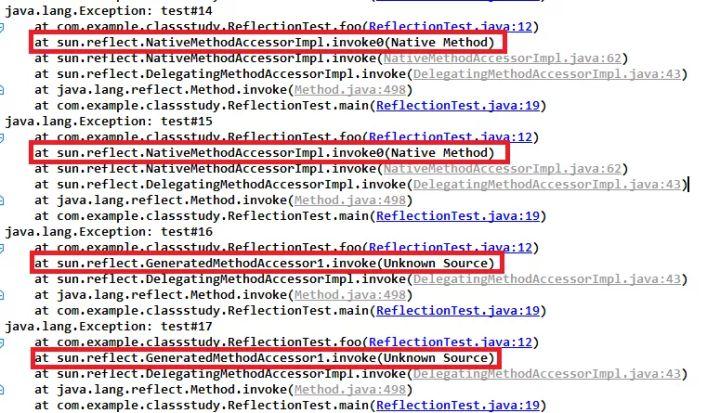
可以看到在 15 次调用 foo 方法后,第 16 次调用 foo 方法是走的 GeneratedMethodAccessor1 来调用的。我嘞个擦,怎么回事,调着调着就不一样了,于是跟代码,跟到了下面这个类:

其中这句代码就是对反射调用的次数做了控制
if (++this.numInvocations > ReflectionFactory.inflationThreshold()
&& !ReflectUtil.isVMAnonymousClass(
this.method.getDeclaringClass())) {
MethodAccessorImpl var3 = (MethodAccessorImpl)
(new MethodAccessorGenerator())
.generateMethod(this.method.getDeclaringClass(),
this.method.getName(),
this.method.getParameterTypes(),
this.method.getReturnType(),
this.method.getExceptionTypes(),
this.method.getModifiers());
this.parent.setDelegate(var3);
}this.numInvocations 的默认值是 0,而 ReflectionFactory.inflationThreshold() 默认是 15,当大于 15 的时候会通过 ASM 技术动态生成 GeneratedMethodAccessor1 类来调用 invoke 方法,但是,因为是动态生成的,我们怎么才能看到这个类实际长什么样子呢?
Arthas
这个时候,就可以用上阿里的 arthas(阿尔萨斯)了。
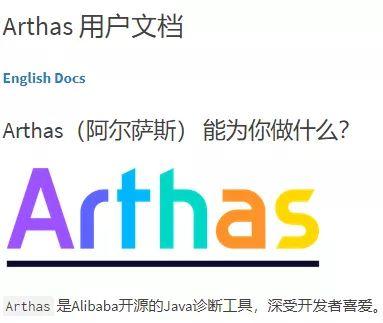
首先下载 arthas:
curl -O https://alibaba.github.io/arthas/arthas-boot.jar
然后启动 arthas:
java -jar arthas-boot.jar
启动之后界面长这个样子:

其中什么 23012, 28436 等是当前环境中现有的 java 进程,然后需要连接到哪个进程就输前面的编号(1234 啥的),输了之后回车。那么我首先改写一下最开始的那个程序,让他不退出:
package com.example.classstudy;
import java.lang.reflect.Method;
/**
* @author TY
*/
public class ReflectionTest {
private static int count = 0;
public static void foo() {
new Exception("test#" + (count++)).printStackTrace();
}
public static void main(String[] args) throws Exception {
Class<?> clz = Class.forName("com.example.classstudy.ReflectionTest");
Method method = clz.getMethod("foo");
for (int i = 0; i < 20; i++) {
method.invoke(null);
}
System.in.read();
}
}重新启动程序之后,查看 arthas 界面:

可以看到 32480 正是我们运行的程序,输入编号 2 去连接到该进程:
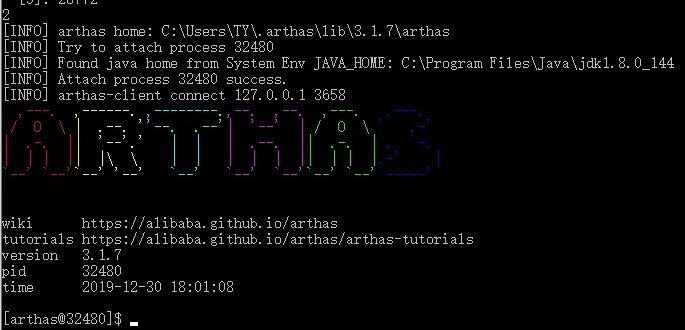
然后就可以将动态生成的类 dump 下来:
dump sun.reflect.GeneratedMethodAccessor1

可以看到字节码被 dump 下来了,找到该文件用 javap 来查看:
javap -c -v -p -l GeneratedMethodAccessor1.class
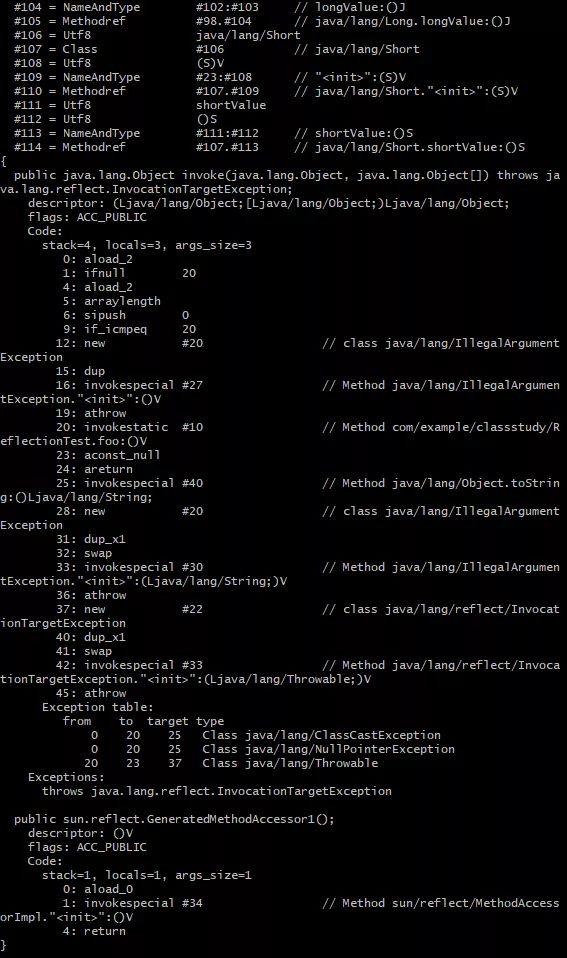
没有问题,可以查看到,然后剩下的就是人肉翻译字节码啦。。。
本篇关于Arthas的使用其实很少,我只是因为学到这个地方简单的用了下,但是已经感受到了 Arthas 的强大之处,它甚至还支持 web 界面。。。
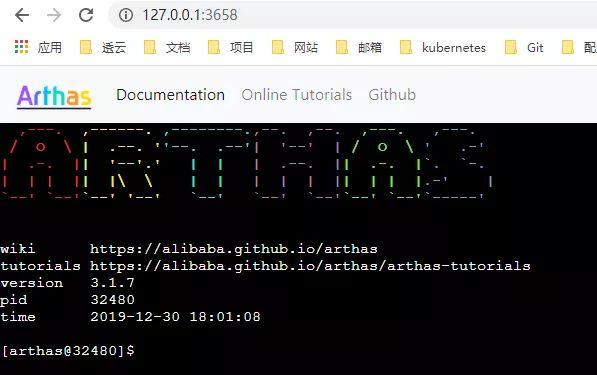
相当厉害!
本文系作者在时代Java发表,未经许可,不得转载。
如有侵权,请联系nowjava@qq.com删除。
